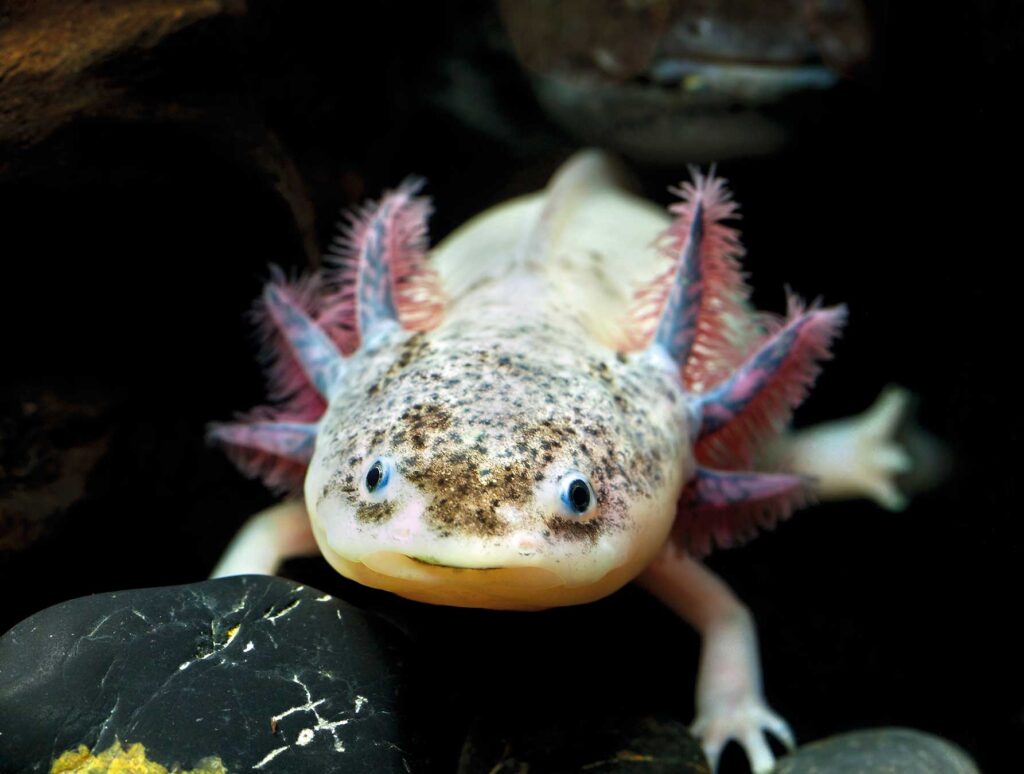
Axolotl
Ambystoma mexicanum
MAXIMUM LENGth

2,9 cm
feeding

Carnivore
activity

Diurnal
Axolotls belong to the family of mole salamanders. They have a broad head and a robust, thick-bodied appearance. They are up to 29 cm in size.Their larvae are aquatic and have feathery external gills and a highly developed caudal fin. Amphibians generally lose their gills when they become mature breeding adults and move to the terrestrial environment, but axolotls can reproduce in the larval stage in water and retain their external gills. This biological phenomenon is called neoteny. Males attract females with secretions from their abdominal glands and release sperm in a spermatophore that sinks to the bottom. The female then rests on the spermatophore and collects it in her cloaca for internal fertilisation.
Interesting facts
The axolotl is a seriously endangered species due to the destruction of its habitat, the introduction of new predatory fish such as carp, and the capture of specimens for pet trade.
Distribution
Conservation status
